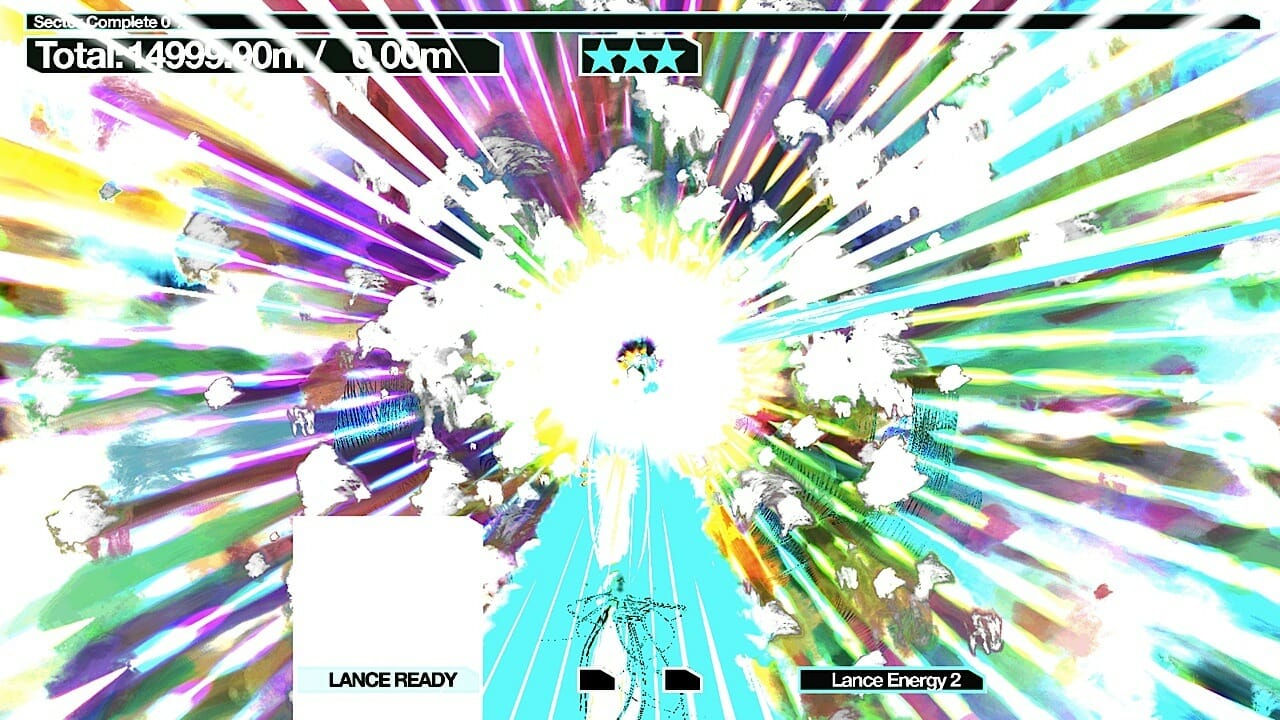
I am going to try and tell you about Dyad.
Dyad is a tunnel shooter. You guide a neon, glowing shape that reminds me of a fishing lure forward (or upward). Locomotion is not propulsion. You latch onto enemies in front of you to pull yourself forward. Getting close to the enemy as you pass by it builds up an energy meter which lets you propel yourself forward in your only attack. This is called “lancing”. New enemy types and techniques are introduced one at a time in each of the game’s stages.
Each stage of Dyad has a goal. It could be a time limit, or destroying a certain number of enemies, or earning a number of boosts. There are three tiers of success for each, three stars. Earn one star and unlock the next stage. Earn two stars and unlock the remix version, which lets you toggle visual and musical and play options. In the remix mode, your shoulder buttons shift the music tempo. Earn three stars and unlock the stage’s trophy challenge. Trophy challenges are modified versions of the stage’s main goal. They are more difficult and require precision.
They force you to believe that what you do in Dyad is not best achieved through random interaction, but through skill.

I think. I don’t know that I’m very good at Dyad. I was able to get at least one star on every stage with three or four tries, max—most of the time, I did it in one. If you’re looking for an arcade-y challenge, you can chase trophies or leaderboard spots. But that’s not my thing. I didn’t want to master Dyad. I wanted to go along with the ride.
The better you are doing at Dyad, the less clear it is what is going on. Colors explode across the screen, the music swells and you attempt to navigate audio-visual chaos. There’s no fetishizing clear feedback here. There are times when I was playing this game when I couldn’t tell you whether or not my input was having any effect on anything.
You latch onto an enemy, pull yourself forward. Latch onto a second enemy of the same color and get a speed boost. If you’re far enough along in the game, a “zipline” forms between the two enemies. Glide along it and your speed increases dramatically. You shift back and forth from just-missing enemies to lancing them head on, finding a rhythm in the storing and releasing of energy. You go faster and faster.
You quit blinking. Your eyes water and your palms sweat and your mouth fills with saliva like Pavlov’s dog as your mind tries to parse all the sensory input. The distinction between your lure and the environment and the enemies breaks down. You observe the chaos, audiovisual and tactile, rumbling feedback that blend together. You think you can see a pattern. Is it apophenia? Do you even have time to parse it? What are you even doing?
Itemizing Dyad does it a disservice. It creates an impression of the game as a series of moving parts that happen to interlock. It misses the point: the smashing of those parts together. Synaesthesia by (and as) design.
Dyad was developed by Shawn McGrath and published by Sony. It is available for the PlayStation 3.
Tell Brian Taylor about Dyad.